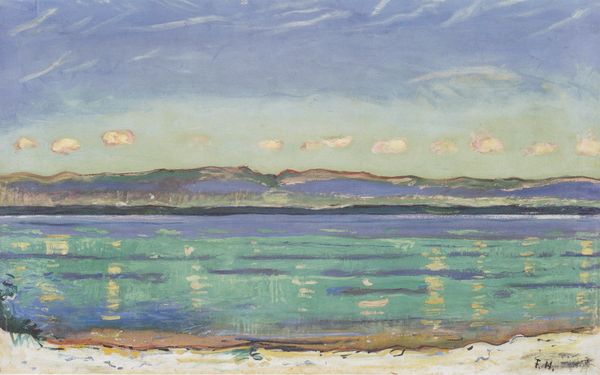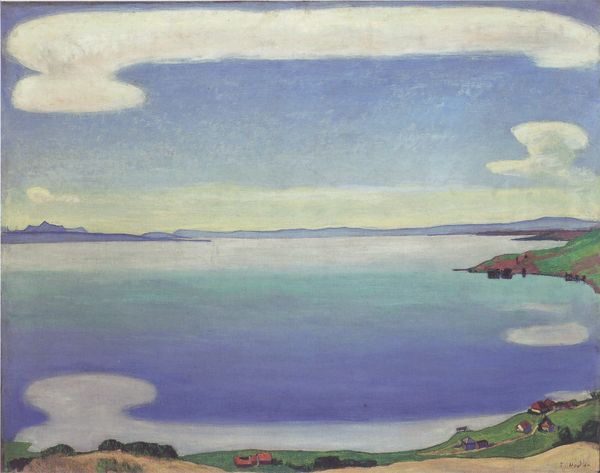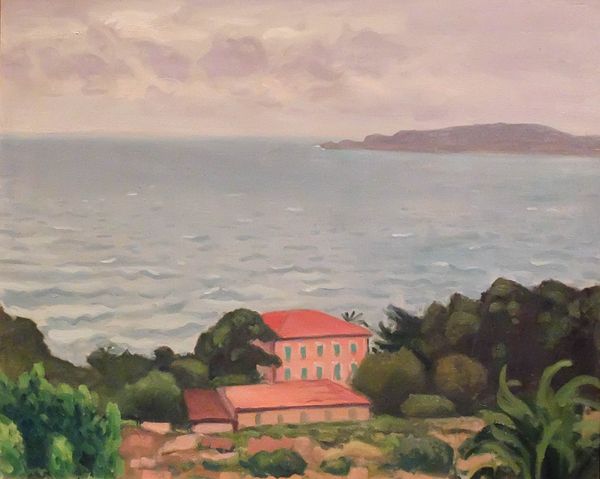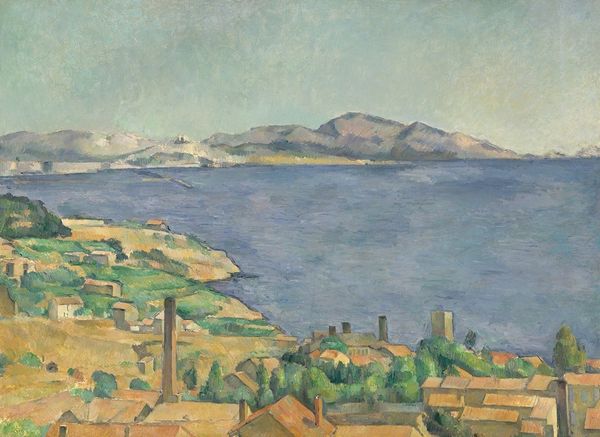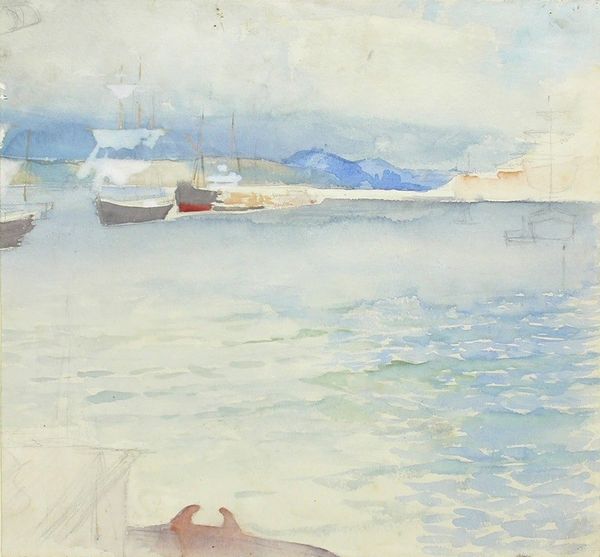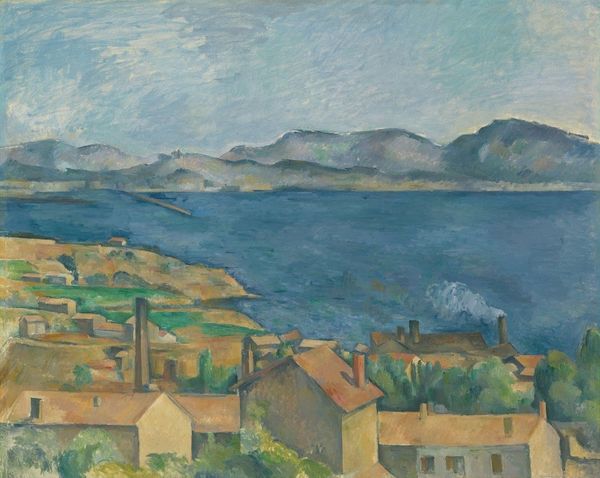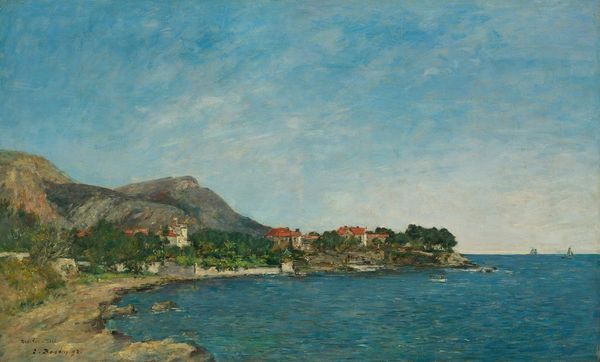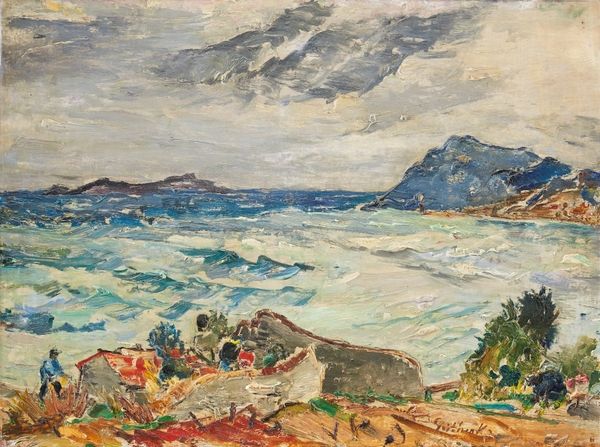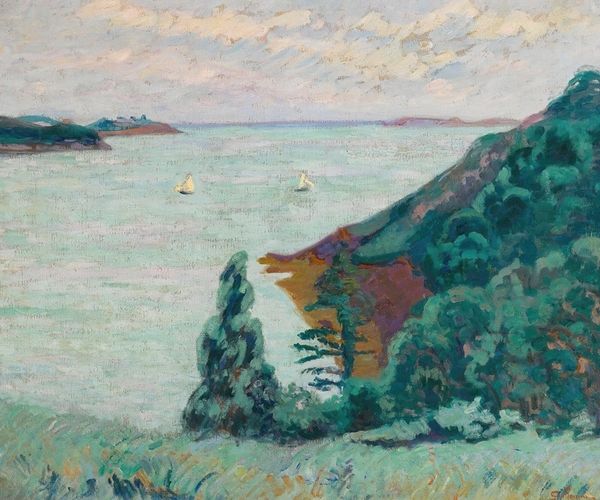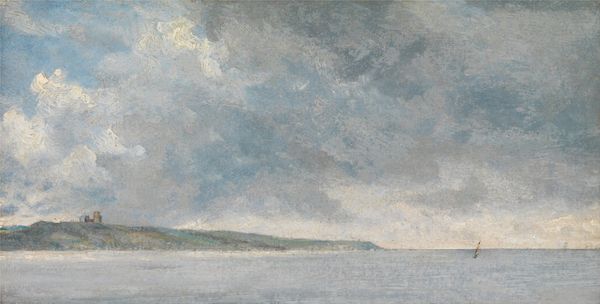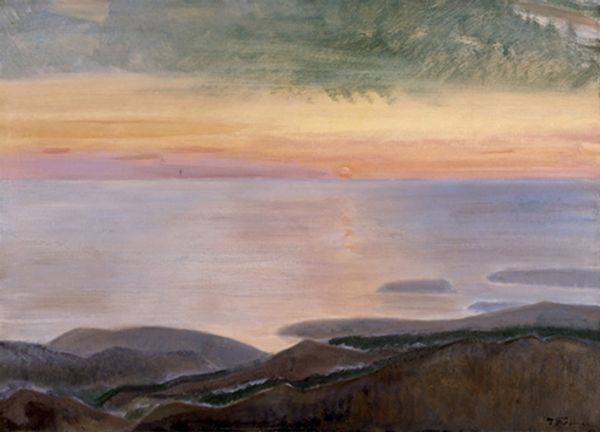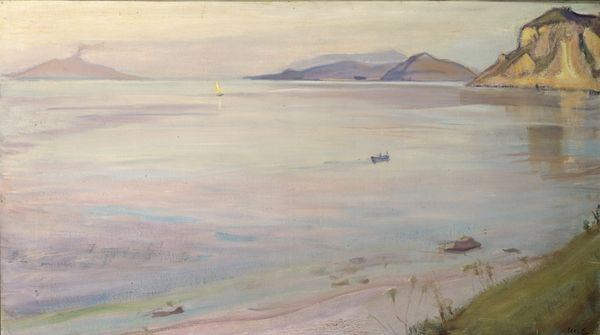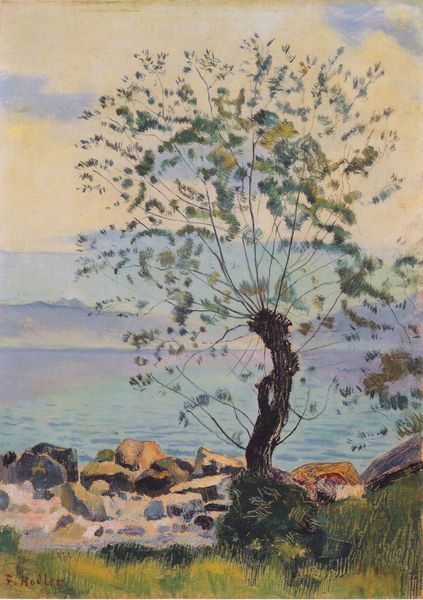
painting, plein-air, watercolor
#
gouache
#
water colours
#
painting
#
plein-air
#
landscape
#
oil painting
#
watercolor
#
modernism
Copyright: Public Domain: Artvee
Curator: Welcome. Here we have Mikuláš Galanda's "The Adriatic," painted in 1935, likely en plein air if we consider his affinity for that technique. What strikes you first? Editor: The pervasive softness—a watercolour haze blurring the line where sky kisses water. It's serene, almost unnervingly so, as though time itself is suspended. What’s the material makeup? Curator: The artwork uses primarily watercolours and gouache. You can tell Galanda favored that medium's subtle transparency, layering hues to create depth while avoiding sharp outlines. The process emphasizes a fluidity, doesn't it? Reflects how he embraced a modernist language later in life. Editor: Indeed. Gouache grants a matte, opaque finish, ideal for capturing the diffused light of a coastal scene. Thinking of materials, one has to consider where these pigments came from, what elements—natural or synthetic—contributed to creating such atmosphere? Curator: I wonder if that red-tiled roof in the foreground represents a tether to human experience? Like a small stage upon which people move on with their little tasks. The horizon then provides the setting and context of something immeasurably greater than just this very day. Editor: Fascinating thought. Focusing on that roof – imagine the labor to produce those tiles, the social hierarchies that governed their distribution and use. The art-historical canon has typically elided such "mundane" considerations. Curator: Galanda’s Adriatic isn't a mirror but a distillation, an idealized slice. And those miniature sails out on the water, like punctuation in a dream...he minimizes human form. It all has this feeling like some faraway, faded photograph. Editor: I keep coming back to the sheer accessibility of watercolor as a medium. The rise of ready-made colors, tubes, and paper around this time meant landscape painting could be almost mass-produced. I wonder, how did that shift affect perceptions of 'fine art' versus the everyday decorative object? Curator: Thinking about this landscape... that sliver of distant coast could also represent a distant time. Somewhere else, a lost part of myself I am striving to meet again... The longer I look, the more the painting appears less of a seascape and more of a psychic landscape. Editor: I appreciate your poetic take! This artwork provides more insights as to the ways that materials and processes shape our experiences.
Comments
No comments
Be the first to comment and join the conversation on the ultimate creative platform.
